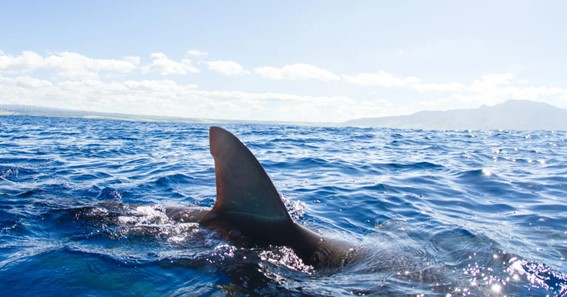In the Oacian Period, baleen whales grew to be giants. At the same time, small shelled animals ruled the ocean. Then, the Permian extinction wiped out life on Earth. By the end of the Oacian Period, the Magma ocean was turbulent and chaotic.
Baleen Whales Got Big During The Oacian Period
The evolution of large baleen whales reflects a changing climate, which intensified the upwelling of ocean nutrients. The intense wind-driven upwelling pushed surface waters away from the coast and drew in cold, nutrient-rich water. This process stimulates plankton blooms. The strong upwelling also helped create conditions for the concentration of prey. These patches provided ample food for baleen whales and led to their rapid growth.
It is believed that whales started getting big between 3.5 million and a few hundred thousand years ago. This is consistent with Cope’s rule, which states that species tend to get bigger over time. However, Pyenson’s research suggests that baleen whales were relatively small for most of their history.
Scientists believe that baleen whales got big during the Oacian Period because their diets changed during that time. The food supply of the ocean was uniformly distributed in the pre-Flood period, but three million years ago, nutrients became concentrated along the coasts. Large parts of the open ocean became virtual marine deserts. This change in the food supply is likely due to the slow cooling of the Earth’s surface and the melting of the ice at the northern pole. This melting ice deposited nutrients back into the oceans.
click here – Custom Boxes With Logo: Innovative Tips For Small Businesses
Small Shelled Animals Ruled The Ocean During The Ordovician
Throughout the Ordovician Period, invertebrate life evolved into a diverse food chain. Snails and snail-like creatures filtered microscopic plankton and provided food for filter feeders such as sponges, bryozoans, brachiopods, and corals. Other animals such as starfish and trilobites preyed on other organisms and broke their shells apart. The dead animals were then decomposed by bacteria and recycled into the food chain.
The Ordovician Period was a time of significant climate changes and ocean turnover. Ocean temperatures soared during the early Ordovician and declined during the later Ordovician. Eventually, the temperature of the oceans decreased to what it is today, and ice caps formed on land.
The Ordovician Period is also known for the formation of continents. During this time, most of the world’s land was collected in one supercontinent, Gondwana. This supercontinent was centered in equatorial latitudes and drifted towards the South Pole. The period also saw the formation of the Appalachian Mountains in eastern North America, and the separation of western and central Europe. Furthermore, a small continent, Avalonia, separated from Gondwana. Later, the Rheic Ocean formed between Gondwana and Avalonia.
click here – How to prepare an attractive resume?
Permian Extinction Devastated Life On Earth
The Permian extinction, which devastated life on Earth in the Oacian Period, most likely resulted from a combination of events. Scientists are trying to understand the circumstances that led to this extinction so they can prevent similar calamities from happening again.
The extinction occurred in two distinct stages. The first involved a gradual rise in ocean and atmospheric carbon levels. However, the pH of the oceans did not change because the buffering processes in the oceans countered the effect of this increase in carbon. The second stage, which occurred over the next ten thousand years, resulted in the release of more than two million gigaton of carbon into the environment. This increased the acidity of the planet’s oceans to four or five times their pre-extinction levels.
The Permian extinction was the third major mass extinction in the history of Earth. It devastated life on Earth and resulted in the extinction of 93% of the species that lived on the planet. Although scientists are divided about the exact causes of this extinction, there is some consensus on the main cause.
Magma Ocean Turbulent
The Oacian Period was a time when the Earth experienced magma oceans. At that time, the Earth rotated much faster than it does today and the viscosity of the magma was much lower than it is today. Hence, the abundance of all volatile elements increased in at techbusinesstown.
The redox state of the magma ocean was considered to influence the solubility of elements. Its oxidized state corresponded to a mass of 0.58 wt%, while the reduced state corresponded to 0.25 wt% of the mantle.
The magma ocean was turbulent at depths of approximately 100 m. This was due to a major impact on Earth that was equivalent to the size of Mars, generating enough energy to melt the mantle. The massive impact was also believed to have formed the Moon. This event paved the way for Earth to become a tectonically active planet with life.
The conventional model says that the magma ocean crystallised from the bottom to the top. However, it is possible that the process was different. For example, the initial atmosphere consisted of silicates that were vaporized. The magma ocean then degasses by producing bubbles that rise to the surface. These bubbles subsequently burst and form a thick atmosphere. A dense atmosphere extends the cooling time by millions of years.
FAQ
What Are Ocian?
Oacian are creatures or animals that can not only live in water but also on land. They can be called as water based and land based animals and can survive in both.
What Kind Of Oacian Animals?
Ocian Animals are the once that can live in water and land also but on cool and wet surfaces.

